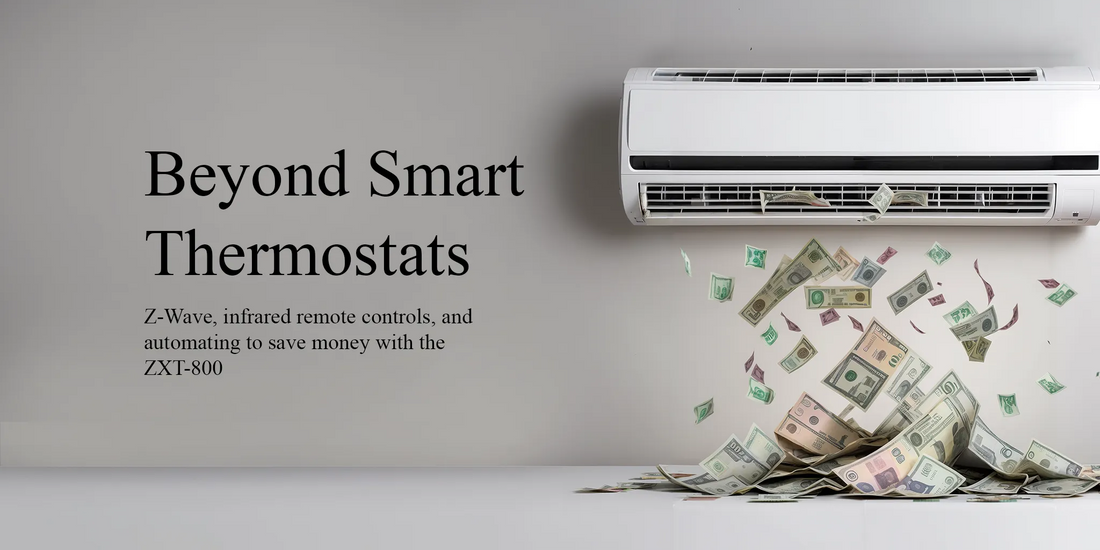Integrating a home's heating and cooling with an automation system has often been a challenge. The same goes for incorporating a wide range of audiovisual equipment. So, does the ZXT-800 from Remotec change the game? Is it the ultimate solution for integrating any remote-controlled device into your smart home?
What is the ZXT 800?
The ZXT-800 is a Z-Wave to infrared converter. It pulls infrared codes from an extensive database or learns them from your existing home remote controls. Then, it translates these codes into Z-Wave commands, allowing your Z-Wave automation system to control HVAC split systems, audiovisual equipment, and other remote-controlled electronics.
What is the ZXT 800 compatible with?
Through a smartphone app, the ZXT-800 is compatible with:
- 27,000 remote control codes from over 8,000 brands of audiovisual systems
- 3,000 remote control codes from 500 different brands of heating and cooling systems
Using it with Home Assistant
Setting up the ZXT-800 starts with powering it up using either 3 AAA batteries or a Mini USB connection. Integrating it with the open-source Home Assistant software is straightforward, thanks to the Z-Wave JS add-on and the Atrim Stick. Both the Atrim Stick and the ZXT-800 are based on the Z-Wave 800 series, maximizing the potential of Remotec's Z-Wave Plus V2 capabilities.
Setting up competing IR blasters in the Z-Wave ecosystem has often been a headache. Remotec has simplified this process through a smartphone app available on both Google Play and Apple App Stores. The app facilitates easy Bluetooth pairing and device setup, allowing you to program the ZXT-800 with the electronics you have, specifying their brand and version. This eliminates the complexity and the need to master Z-Wave command classes.
Control and automation
Once set up, you can control the ZXT-800 via its app or through Home Assistant's interface. But the real magic lies in automation. Using Home Assistant, it takes just a minute to set up a simple automation flow. For example, when the room temperature exceeds a set point, your cooling system activates. You can also set the desired temperature, cooling system mode, and fan speed, provided they're all supported by your split system.
While the ZXT-800 makes temperature measurements easy with its built-in temperature and humidity sensor, optimal use involves integrating it with other sensors:- use open / close sensors to automatically turn off heating or cooling whenever a door or window is left open
- use a multisensor to automatically turn off a HVAC system whenever a room isn't occupied or use its temperature sensor for greater thermostat accuracy
Conclusion
The ZXT-800 offers seamless integration with Home Assistant and simplifies what is typically a complex IR blaster setup. While it may not halve your energy bill immediately, its potential for cost savings, especially when combined with other sensors and data points, is undeniable.
